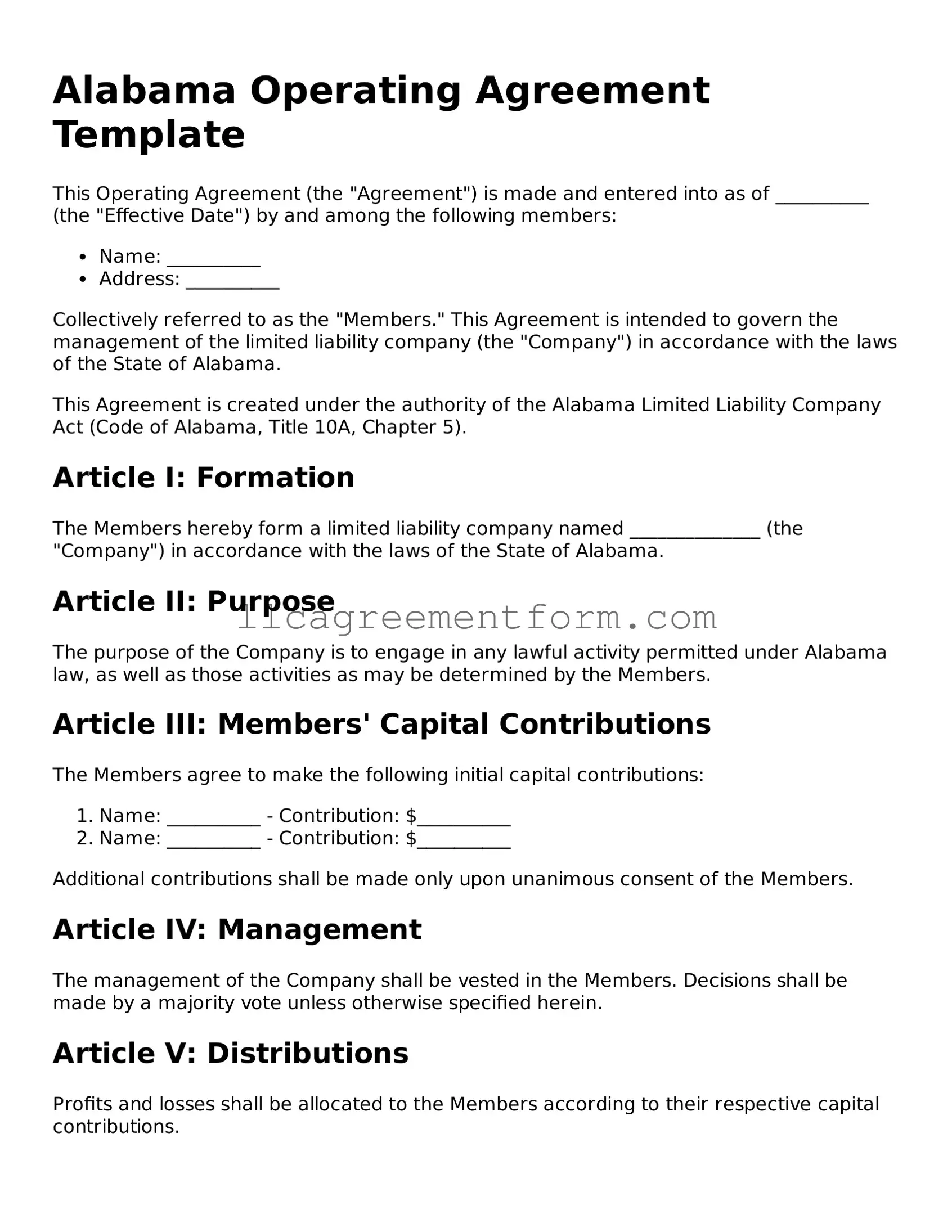When forming a Limited Liability Company (LLC) in Alabama, one of the essential documents to consider is the Operating Agreement. This form serves as the foundational blueprint for how the LLC will operate, outlining the rights and responsibilities of its members. It addresses key aspects such as management structure, profit distribution, and procedures for adding or removing members. Additionally, the Operating Agreement can specify how decisions are made within the company, ensuring that all members are on the same page regarding governance. While Alabama law does not require an Operating Agreement for LLCs, having one in place can help prevent misunderstandings and disputes among members. It can also provide clarity on various operational aspects, such as meeting schedules and voting procedures, which can be crucial for smooth functioning. Overall, the Operating Agreement is a vital tool that not only protects the interests of the members but also helps to establish a clear framework for the LLC's operations.
